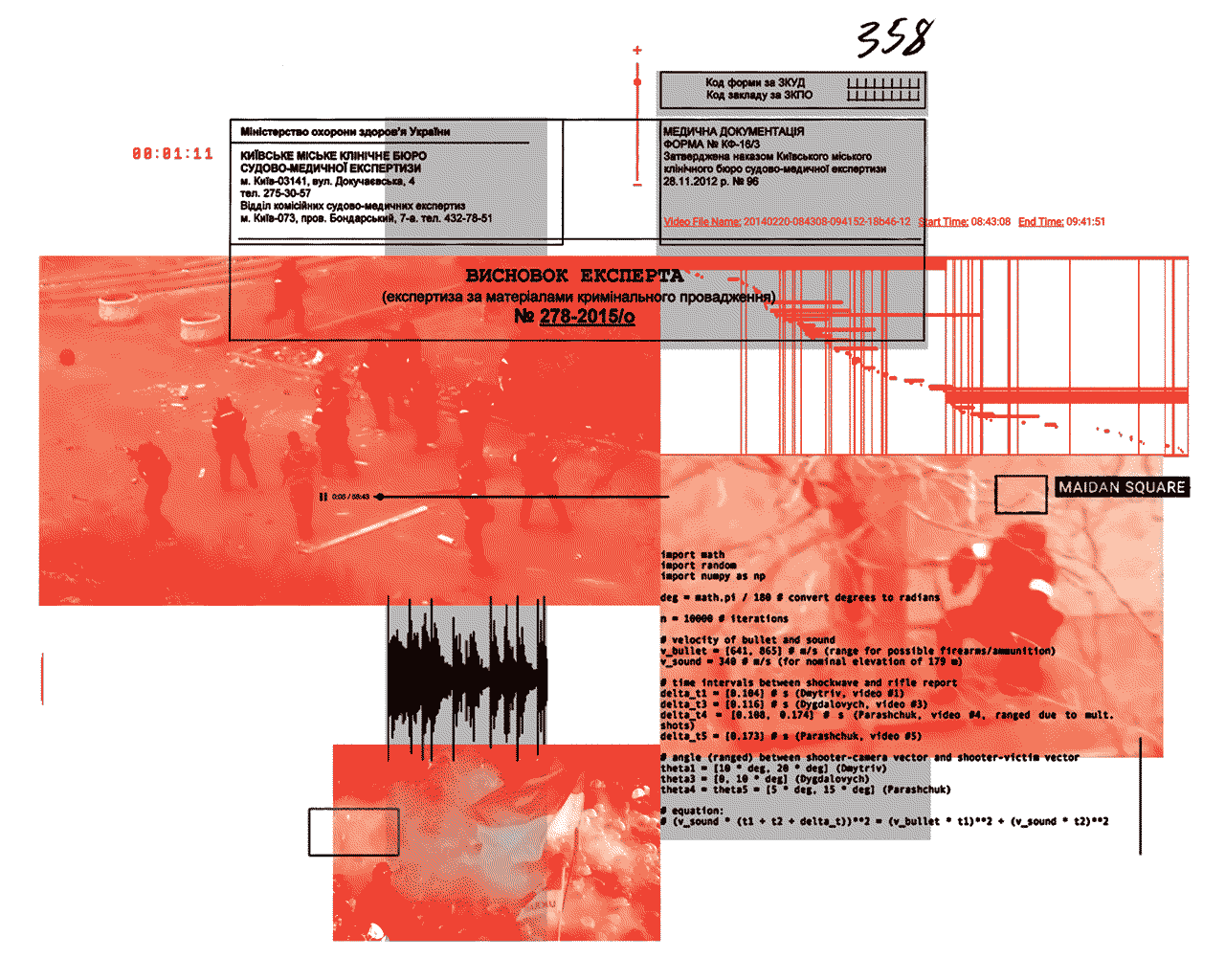


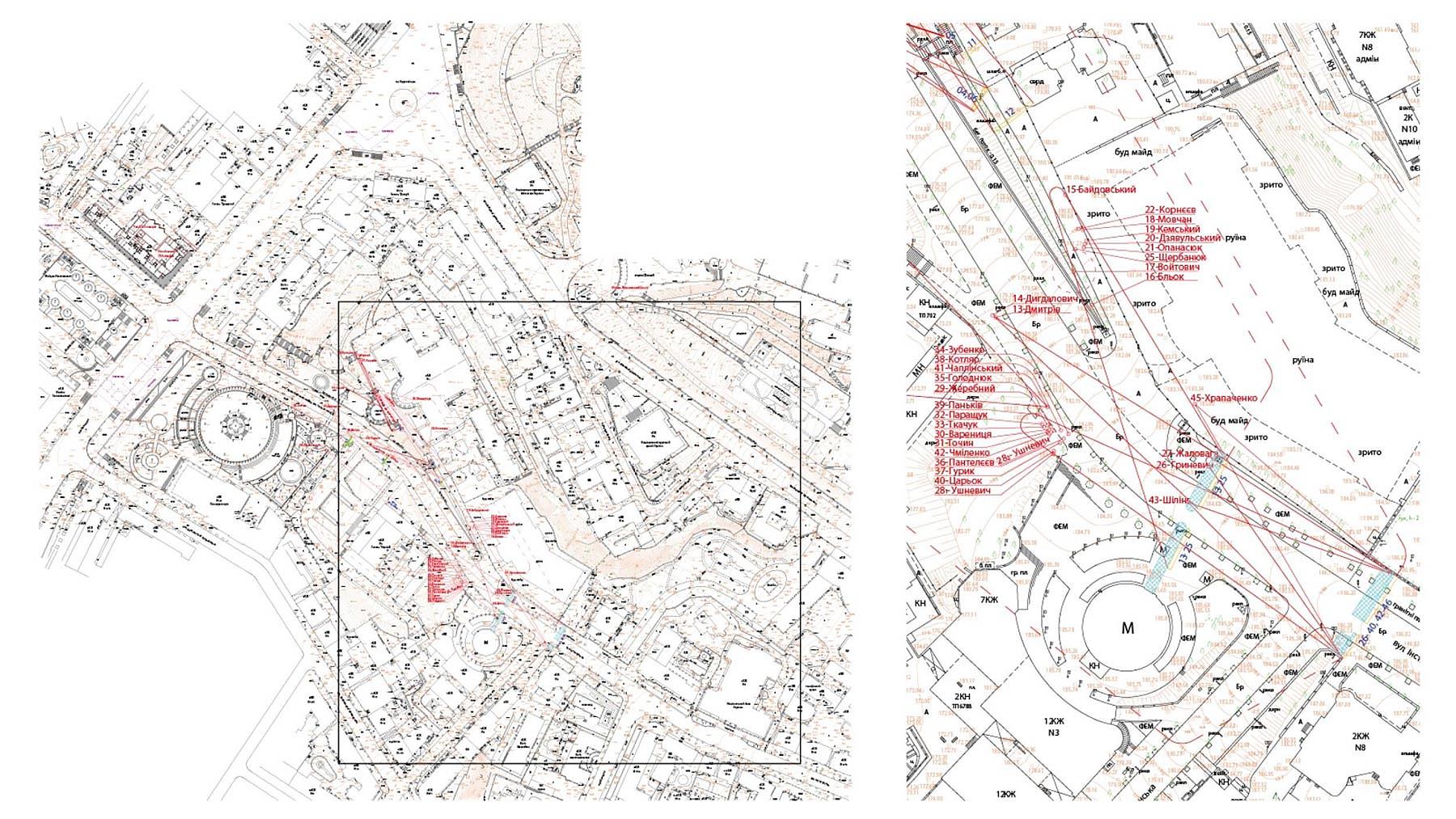
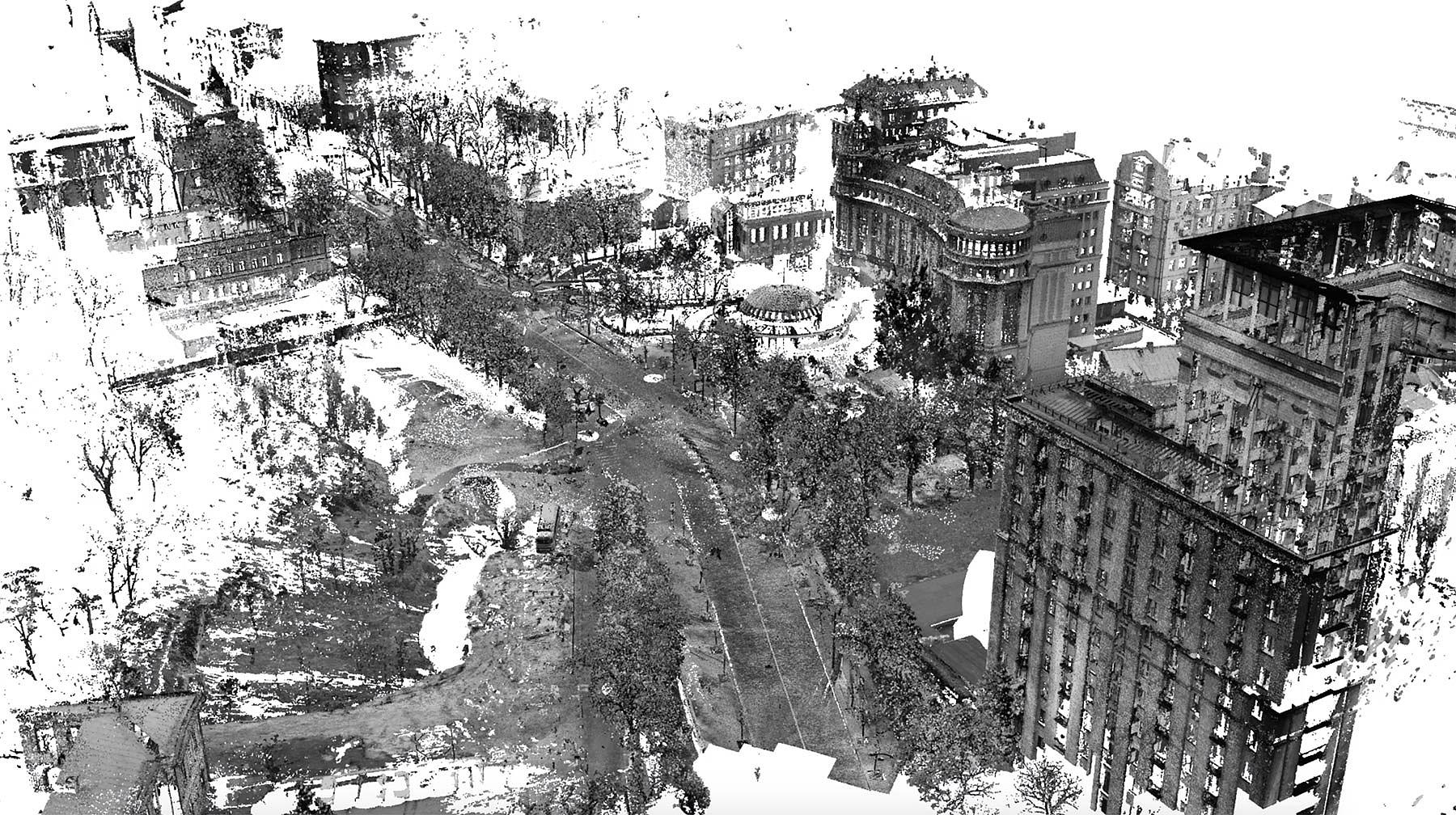
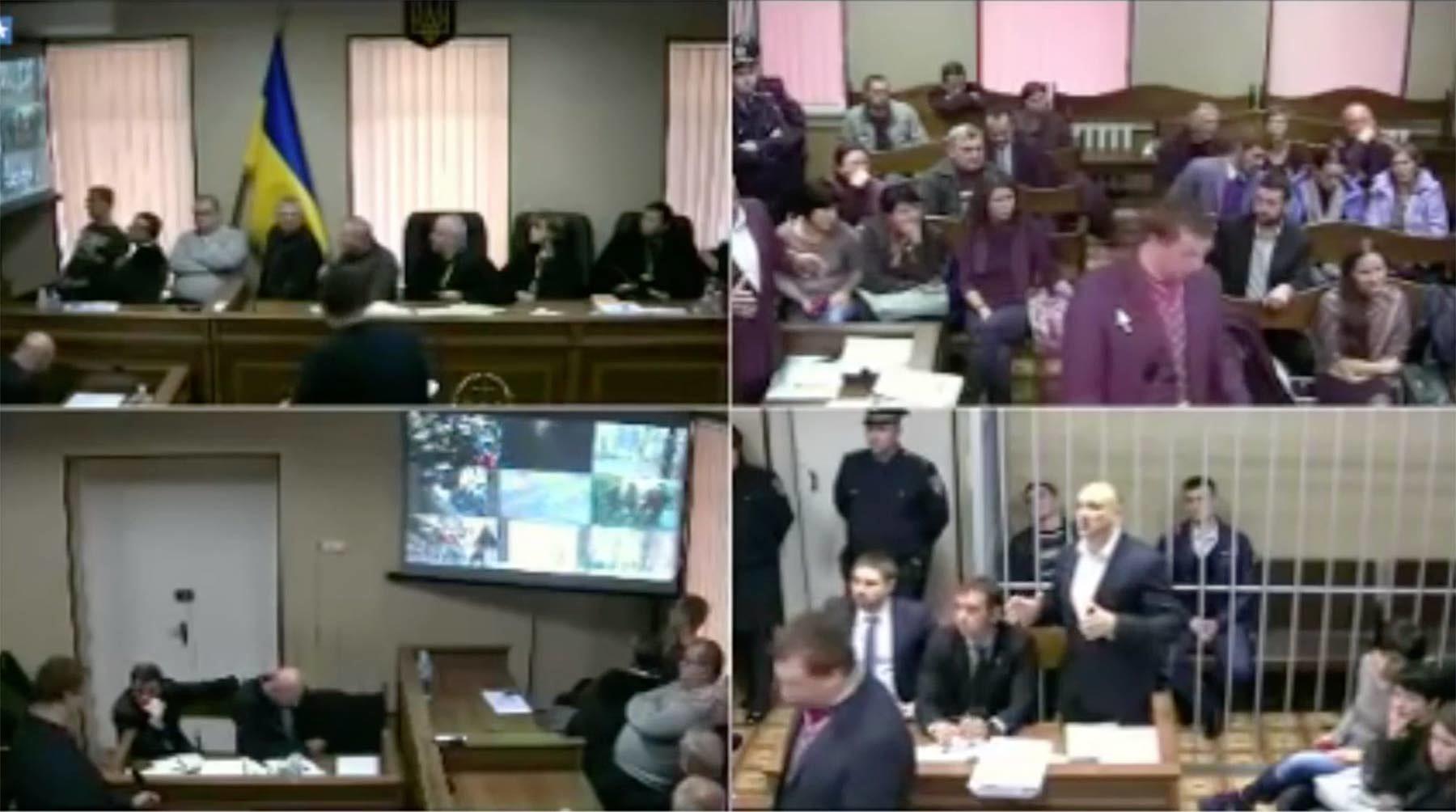
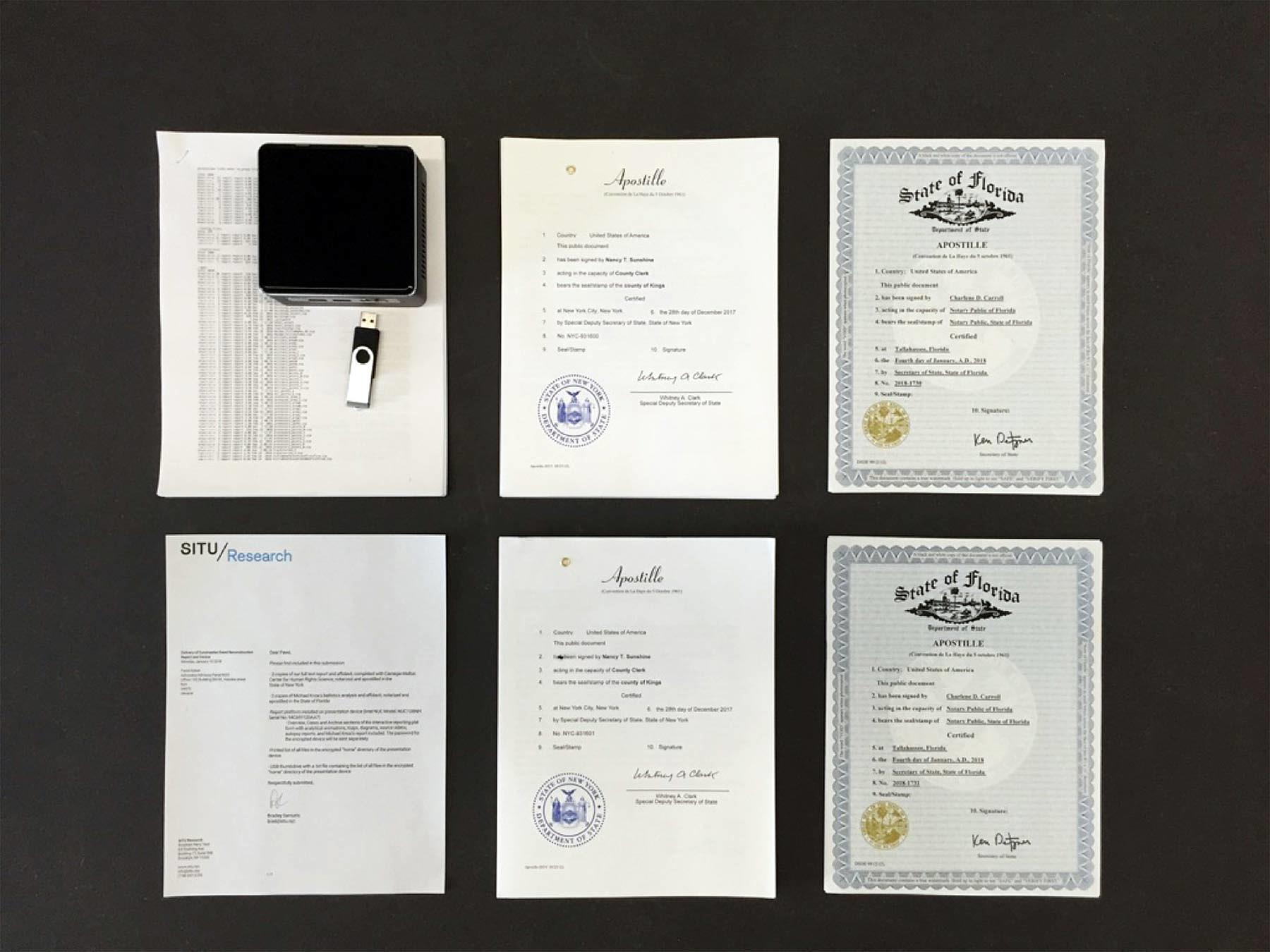
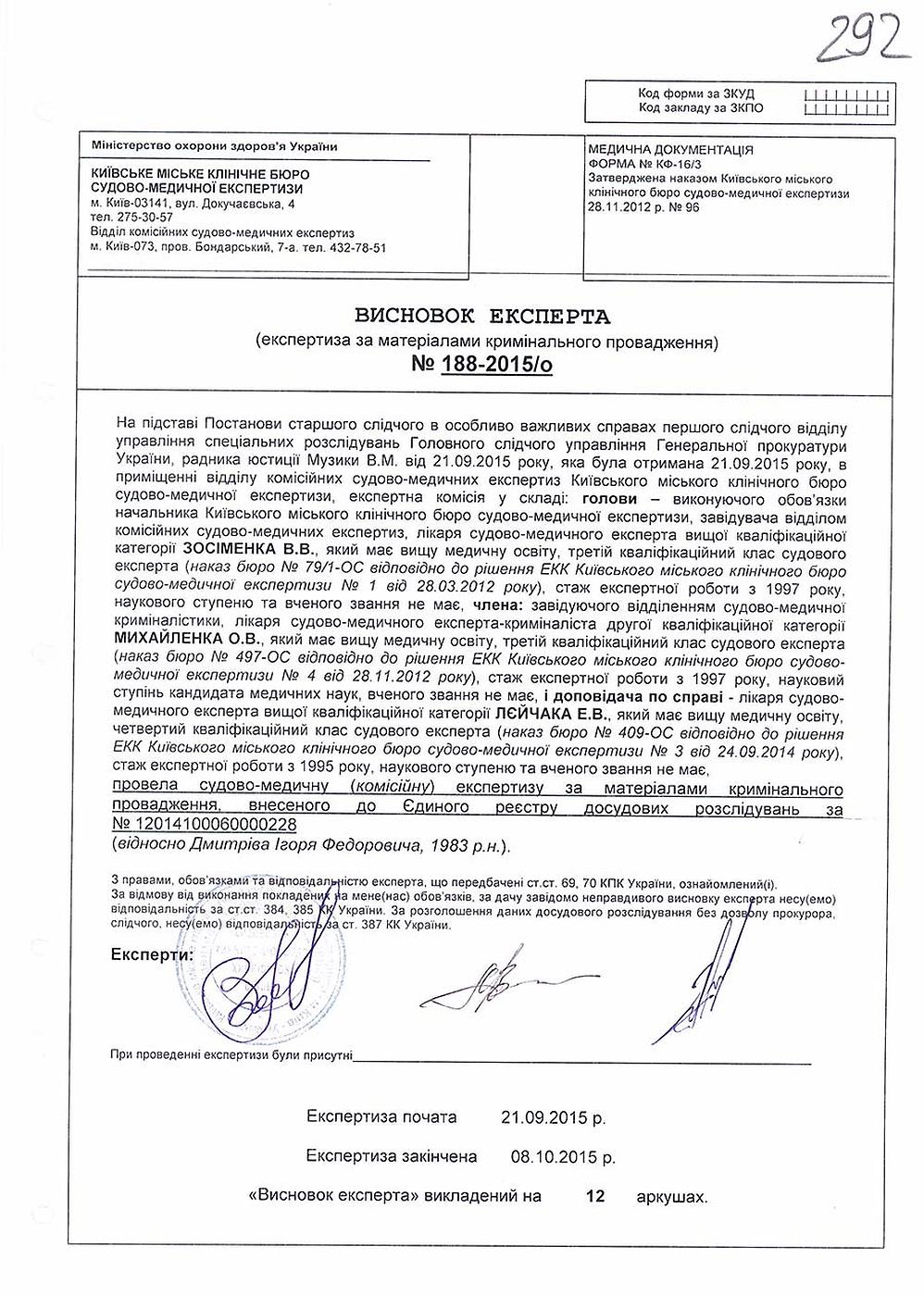
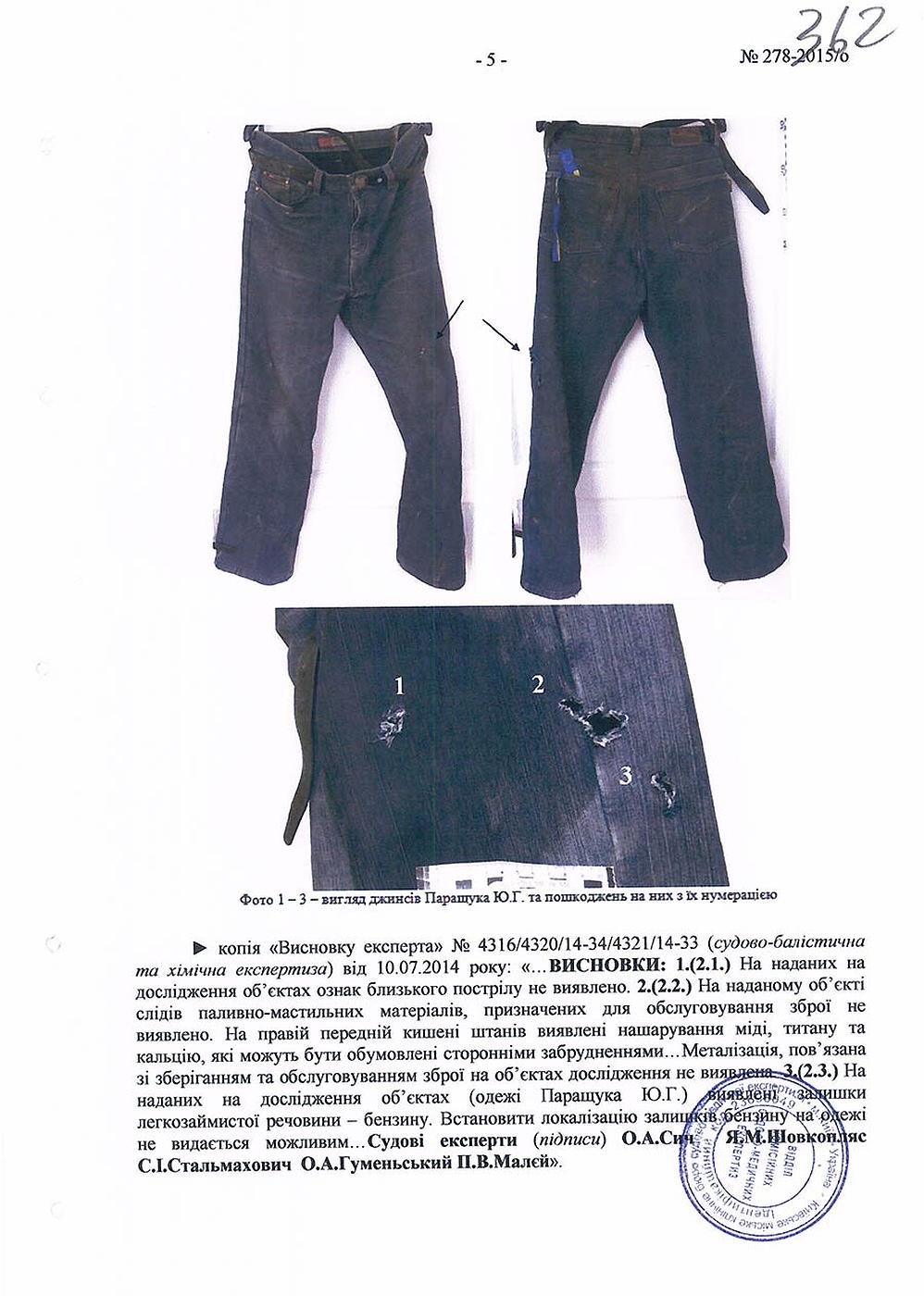
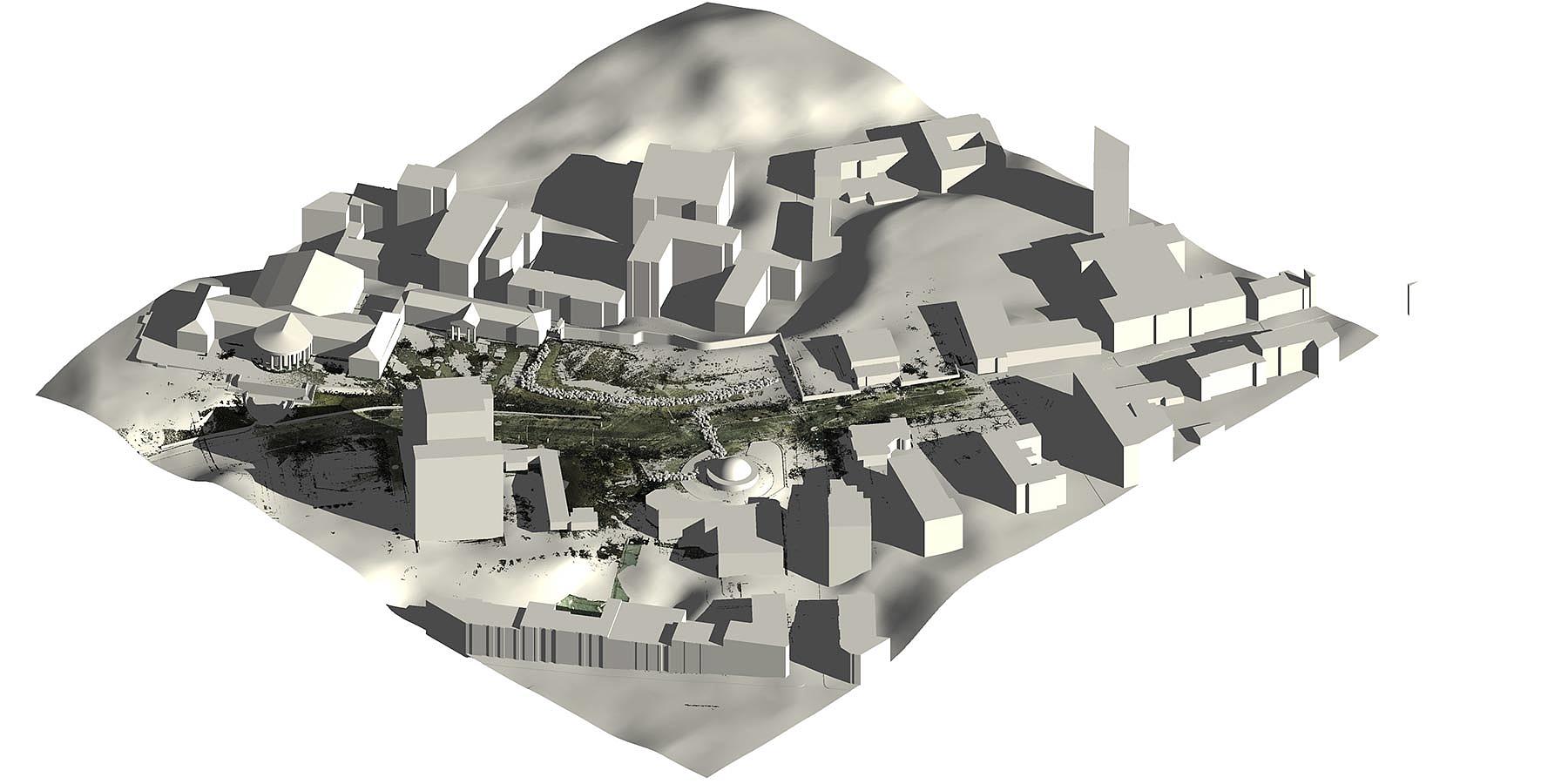

Maidan Event Reconstruction (2015-2017)
SITU Research worked with a team of Ukrainian attorneys, activists and computer scientists to reconstruct three protester deaths from an archive of eye-witness videos taken during the Euromaidan Protests in Kiev in 2014. Drawing on spatial analysis, 3D modeling, animation and interactive visualization, we developed a tool for presentation of evidence and our analysis of those protester deaths in Ukrainian courts.
47 civilian protesters were killed on February 20, 2014, in Kiev’s historic Maidan Square after advocating for European Union integration and constitutional reform. It was alleged and in many cases well documented that those 47 deceased protesters sustained fatal gunshot wounds at the hands of Berkut and other armed Ukrainian Interior Military Force personnel.
The prompt: Working with 65 hours of video evidence could reconstruct the events of the day in order to understand movements and locations of police activity in relation to positions of protesters and ultimately draw conclusions about accountability?
At the request of a team of attorneys, SITU Research and Carnegie Mellon University’s Center for Human Rights Science (CMU CHRS) worked together to produce an event reconstruction related to the deaths of three specific protesters. Our reconstruction and analysis is based on data provided to us by this legal team, including nearly 65 hours of video, site surveys (including a 2D plan of Kiev and a 3D point cloud), and autopsy reports. In addition to conducting this analysis, SITU produced an interactive presentation platform that contains evidentiary assets, the results of our analysis, reconstruction animations and an archive of geolocated and synchronized source videos.
For presentation in the courtroom, SITU designed and developed a tool that allows a viewer to navigate through videos and other relevant evidentiary assets through recorded location and time. This presentation tool also allows for the viewing of synchronized and geolocated video evidence alongside the relevant digital reconstructions and visualizations of protester deaths that they directly inform. This tool includes media pieces that serve as chronological overviews of protest events, along with the video archive.
The interactive platform and co-developed tool for the analysis of citizen video had a significant impact on court proceedings. It marked the first time that visual evidence and analysis of its kind was presented in Ukrainian courts.
While the development of this tool has been driven by work on the Maidan case, it is being designed with the intention of being a more broadly applicable resource for harvesting, accessing, analyzing and presenting citizen video documentation of other complex events.
The SITU and Carnegie Mellon teams have documented the methodological and technological achievements of this project and we anticipate these outputs serving as important resources for future applications of visual and spatial event reconstructions where vast amounts of citizen video need to be analyzed. Our practice note published in the Journal of Human Rights Practice in April 2018 outlined the core methods implemented and contextualized the project within recent work with video in the field.
Link to platform: http://maidan.situplatform.com
// work done for SITU Research //
Collaborator: Carnegie Mellon University Center for Human Rights Science, Carnegie Mellon Robotics Institute, Advocacy Advisory Panel, Pavel Dykan Alexandra Iatsenko, Jus Talionis Reconstruction Lab
Project Team: Dan Miller, Brad Samuels, Lindsey Krug, Gideon Finck, Griffin Frazen
Responsibilities: project management, design lead, UI/UX design, 3d modeling, geospatial data analysis, animation
Tools: ArcGIS, InDesign, AfterEffects, Illustrator, Photoshop, 3ds Max, Autodesk ReCap